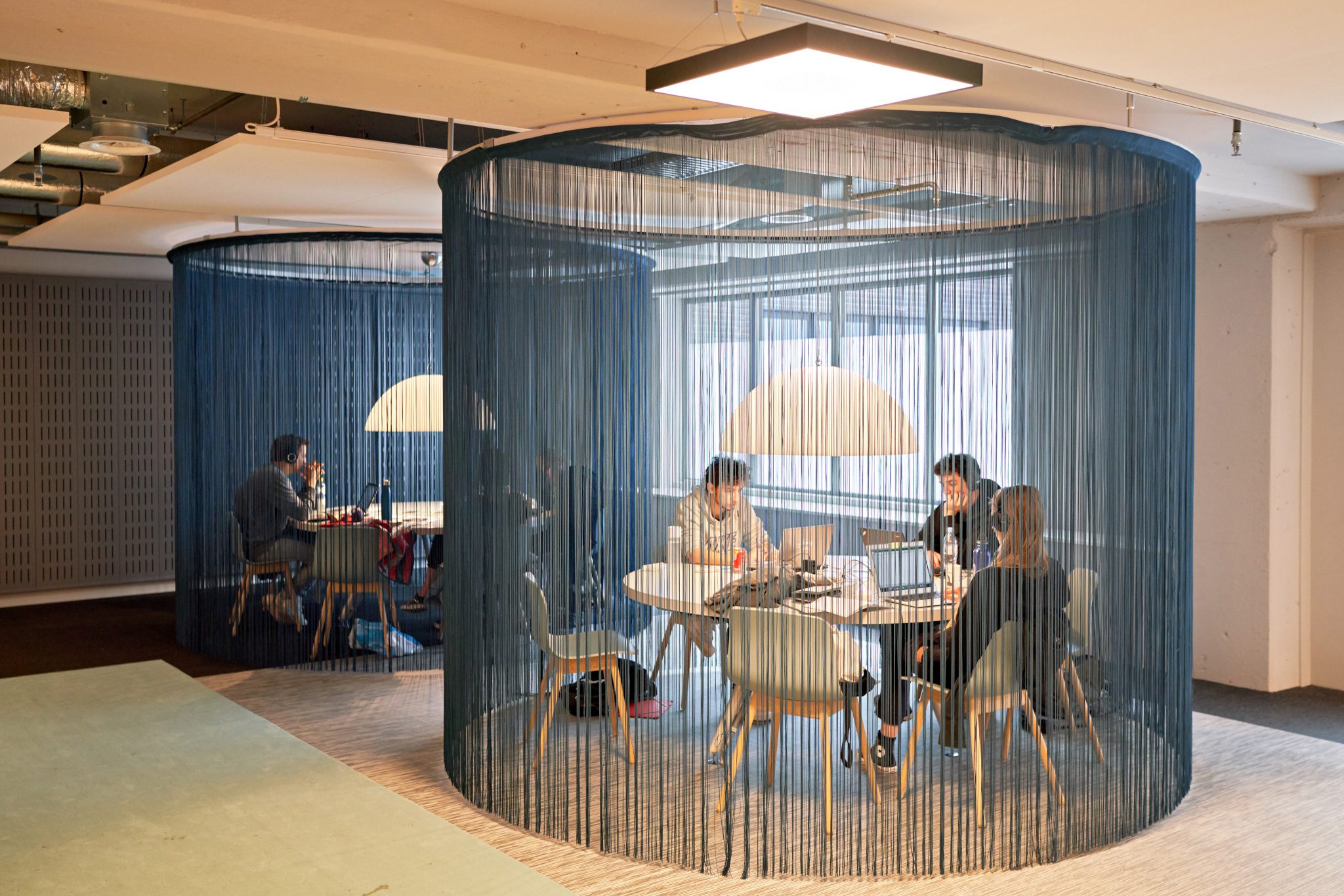
The importance of course structure in online education
“A clear course structure in online learning activates“
Examples of successful online courses are the courses Self-care with E-Health (1.6)* and Entrepreneurship in Healthcare (2.3)*, at Medical Information Science (MIK). Students indicated that they benefited greatly from the clearly laid out structure of these courses. They were also able to remember the material well because of the reflection assignments, which replaced the multiple choice knowledge test due to online education. Research also shows that a clear structure is especially important in an online education setting; as there is less room for immediate, impromptu adjustments (Castro et al., 2016; Money & Dean, 2019).
* All courses in the MIK program have a number and are cited by instructors and students at their number.
Experience of lecturer Tom Broens
Tom Broens, PhD, program director and lecturer bachelor Medical Information Science, Principal Educator AUMC.
Meer informatie over Tom Broens
https://www.vanwijnen.nl/projecten/collegezaal-3-0-voor-amsterdam-umc/
***For this, Broens won a 2020 EUNIS Award (https://www.eunis.org/awards/)
https://communities.surf.nl/artikel/multifunctional-lecture-hall-amc-uva-winnaar-eunis-award-2020
Active learning
“Our programme is in between healthcare and ICT. The vision of the programme is that we want to apply active learning as much as possible. The clear structure of the courses Self-care with E-Health (1.6) and Entrepreneurship in Healthcare (2.3) is consistent with this. In these courses, a home assignment is always combined with a workshop and that pattern repeats itself in a series of five workshops/home assignments as a kind of Paced learning. Each time students make a step towards more knowledge: summarise material, workshop, summarise material, next workshop etcetera. That’s how you teach them active learning.”
Structure allows students to concentrate on the content
“I like structure very much myself and believe that you shouldn’t frustrate students with information and planning things. It’s about the content of a study, about what they have to learn. They have to be able to work on that content, they have to be able to gnaw on it, not so much on the planning. So the study programme likes to facilitate by already realising that clear structure, so that students know where they stand. The entire structure is organised around contact moments – the workshops – and corresponding assignments before and after the workshops in self-study time. That way, the student knows exactly where he stands.”
From micromanagement by first-year students to more independence by second-year students
“In the first year, we practice micro-management: every detail is specified in a block schedule, including what is expected in self-study time. In the second year, this is already looser; then you expect that students are better able to plan and have built up more independence because of the example set in the first year. With on-campus education such a clear structure already worked well, but with online education it is even more necessary. When working online, one’s private life and study or work life are mixed up, and if you don’t know exactly what to do about your education, the temptation to go home and do all kinds of other things first is big. So there should be as little barrier as possible, because you don’t know what you need to do with your self-study, because then you are more easily tempted to distract yourself. You could say that with this structure we are trying to tempt students to spend more time on their studies.”
Multiple choice knowledge tests replaced by home assignments
“Pre-covid, we had completely rewritten the curriculum, abandoning the knowledge tests from the old curriculum. We wanted to move away from the old curriculum, which was based more on knowledge tests. Academic thinking and work is more about application and reflection, but the programme also wants to deliver students who, as professionals in society, have a sound basic knowledge and can memorise terminology without having to google it. Our approach is therefore that we want to include basic knowledge in knowledge tests, but as part of other activating educational methods and assignments. Initially, we were still using multiple choice knowledge tests, but because of the digital revolution that covid has brought about, and the choice of whether or not to use proctoring, we started thinking about how we could still test knowledge without the hassle of surveillance. To replace the multiple-choice knowledge test, we therefore came up with reflection assignments. In this way, we can still test the knowledge level, but by means of home assignments. For example, answering five learning questions and making a summary that has to meet certain requirements. That worked so well – students are really more actively engaged in the material and do not lag behind – that I expect to take it with me, also when we are allowed to be fully on campus again. The advantage here lies mainly with the student. The disadvantage for the lecturer is that it is much busier when it comes to checking the results. Giving feedback via rubrics takes more time than checking a multiple choice knowledge test, which can be done using Canvas or Testvision. The latter saves a lot of work and is easier for the teacher.”
On campus versus online education
“It will be a challenge for everyone to decide what to keep from digital education and what you can and want to do better physically. I would say keep the good things from online and replace what works less with on-campus education, so keep the combination of both. The advantage of working digitally is that the availability of students is much greater, attendance was clearly higher than usual. So I think I will keep the simple lecture contact moments digital. Guest lectures are also more convenient online, I think. For some practicals, you can work perfectly well in breakout rooms and it is much easier to watch via shared screen than hanging over someone’s shoulder. Last year, during study days, we also kept a Zoom session open all day, where everyone could freely go in and out. Study days are compulsory, structured study days with often a major assignment, such as a paper or a practical, linked to a deadline. Students could work together in breakout rooms on those days. If I had time, I would occasionally go in to check with the students to see how things were going and whether there was anything else I could do for them. Informal, but still useful. For me, it was also a way of keeping in touch with the groups. It worked very well and we see open Zooms sessions on study days in the department as best practice. But it is nice to be able to actually look each other in the eye when you are really working together, discussing things and reflecting, and that gives the added value of doing it on campus. Symposia, intervision moments during the mentorship will therefore also be done on campus. Last year, we split up the final symposium into small sessions on campus and that was very easy to do and fun. We have also noticed that presentations by students work better on campus. That gives a different dynamic than recording a presentation video that the student can repeat endlessly until it looks good. You can’t do that if you physically hold a presentation live. Video presentations, on the other hand, are logistically easier to organise and cost the lecturer less time. The remarkable thing is that our course evaluations in the corona year are even better than before. The results have remained the same or gone up, students have not fallen behind with their studies. So the introduction of the new, more ambitious curriculum and the introduction of the digital solutions because of corona have apparently succeeded well.”
TIP FROM TOM:
“Teachers are always too busy and there is little time to delve into new matters such as digital education. My tip is that if you can’t work something out, you can save time by consulting the educational department of your study programme; they are linked to the TLC. We also regularly ask for advice. I am also always in favour of ‘just trying it out’ and asking the student for feedback on whether it works for them. If you keep the feedback loop short, ask for feedback straight away – verbally or with, say, three questions in an online questionnaire via Shakespeare, for example – then you can immediately do things differently the following week if it doesn’t work. Another example of ‘just trying it out’ is our new lecture hall that was built pre-corona especially for teamwork. During Corona, the room turned out to be very suitable for hybrid education with thirty people in the room and twenty on the screen. By trying that out, we found that hybrid lecture worked very well there. I also noticed that it is very important to explain to students why you do certain learning activities during the lesson, to explain what you want to achieve by doing so and what you are going to learn from it. That you understand that some learning activities will frustrate the student, but that that is part of it. So reflect and be clear about the design of your subject and the intended goals. Students always respond positively and give good feedback. We aim to include this as a standard in our teacher professionalism.”
Student experience
 |
Student Chen Lu Wang
2nd year student Medical Information Science |
Detailed subject structure gives a grip
“I really liked the fact that the form or structure of the courses was made very clear in advance. Thanks to the timetable, you knew exactly how the subject was structured and what was expected of you at what point. That gives you an enormous grip on how you organise your time. You know exactly when you have to prepare something, when you have to do which assignment and so you do it. I always find that a nicer way to work, but online education requires even more structure, because it’s even harder to be self-disciplined at home. Self-care with E-Health (1.6) was given at the end of the year. Normally, at the end of the year, my attention span is pretty much exhausted, but because this course explains so precisely what you have to do and when, I was able to keep my attention.”
Self-study in open Zoom sessions
“The less structure there is, the harder it is to plan. Self-study days are also nice, you can arrange them yourself, but they give a doubtful feeling of ‘am I spending enough hours on my study, am I working on my assignment sufficiently? Because the study programme has put this structure into the subjects, it is very clear how you have to divide your time – for instance, in the morning you follow the workshop and in the afternoon you have to summarise, whereas on study days this is open. What was nice was that we held a number of Zoom study days ourselves. Zoom was open all day and everyone could go in and out whenever they wanted. You can discuss things with your fellow students and at the Zoom study days facilitated by the study programme, the lecturer drops by now and again to answer questions, which is also handy.”
Micromanagement does not work as well for afternoon or evening people
“I think micromanagement for all parts of a subject is very nice, but I have heard that it is more difficult for students who are more of an afternoon or evening person. They actually want to shift parts/assignments to the afternoon or evening, but with such a tight timetable, shifting works less well. The difference in structure between the first and second year is quite large. It would be nice if there was an intermediate step between micromanagement – a strict daily schedule down to the details – and much looser – a weekly schedule.”
You remember more from summary assignments than from multiple choice knowledge tests
“The multiple choice knowledge test was, due to digital education, converted into summary assignments that you could do at home. You have to make a summary of the subject matter of the workshop beforehand and hand it in. This can be articles, books or the lecture itself that you have to summarize. The grade will be based on the number of key concepts you have included (correctly) in your text. This repeats itself around each workshop. I think that’s a good method, because with a knowledge test – especially at the end of the year – the material doesn’t really sink in. You learn for it and maybe pass it, but you soon forget the material afterwards. Now you build up the knowledge slowly and it stays in your head more.”
On campus versus online and hybrid education
“Physical education is always more fun, you can’t escape that. I think you have to look at each subject to see what works best. It is better to do presentations on campus. During the first period, we were allowed to record videos during corona and publish them on YouTube as a substitute presentation, but it is really very different if you have to do a presentation live in front of a group. Moments of collaboration, moments of discussion are fine in breakout rooms, but some things are awkward, like when you want to ask the lecturer a question. It often takes quite a long time before the teacher enters your breakout room. And because you can’t see where the lecturer is, you have no indication of when he will arrive, so it feels like it’s even longer. If students have to come to the AMC for one or two hours of lectures, they often feel like ‘that’s not convenient’. A hybrid solution would be nice for those students, if the programme wants to do the lectures on campus. With on-campus classes you also have to travel to the lecture location. It is nice that online it is easier to ‘go to class’ because you only have to switch on your computer. So you can get up five minutes before class starts if you want.”
TIP FROM CHEN LU:
“Sometimes the exact time it takes to complete an assignment is written down, but most students take longer than they are told and that is frustrating. So give more of an indication of time and let the students know that it is a guideline. Furthermore, I would not do the lectures that take a long time – three hours or more – online in the future. That is difficult to maintain. I am very much in favour of a short feedback loop. then you can also ask students to fill in a short questionnaire online in between courses so that they don’t only receive feedback at the end of the course on what they should do better, because by then it is already too late for those who are following the course. To me, a good course is one that combines various forms of work: collaborative assignments, discussions, reading and summarising the material, giving presentations. Teachers shouldn’t expect students to only gain knowledge from a book, because this variation in teaching methods is important.”
Reactie Tom
“The calculation of how many hours a student spends per study component remains somewhat of a guess. Every student has his own pace. We have indeed noticed that specifying the workload in exact hours is frustrating, especially for the student who works slower. So you do not necessarily have to give an indication. If you do want to do that, it is better to state that it is an indication and to let it be known that ‘we think it takes so much time’. Asking students for feedback about the process, the structure of the course and the time they spend on assignments is always advisable, in my opinion. Then you get a better idea of how it works out in practice for students. We do not have many lectures of three hours, but I agree with Chen Lu that those long lectures are not nice online. But if you get assignments in between – working together in breakout rooms, preparing something – then that time is divided and it is perhaps easier to keep up. Or you have to do the hybrid, those who want to come come, and those who don’t follow it online. I completely agree with Chen Lus‘ comment that a certain amount of variation in teaching methods is necessary within subjects, especially online.”
Series of examples of online education during COVID-19 in practice
This story is part of a series of inspiring case studies of online education during the COVID-19 pandemic, which emerged during focus group discussions within the research project ‘Online and blended education at the UvA’. This research project offers insight into the experiences of lecturers and students with online (aspects of) education and the strategies lecturers have used to stimulate (online) learning. The stories and reports from this project can be found on the project page: https://tlc.uva.nl/article-category/onderzoek-en-kennisdeling/?faculty=26
Literature
Castro, M. D. B., & Tumibay, G. M. (2019). A literature review: efficacy of online learning courses for higher education institution using meta-analysis. Education and Information Technologies, 2019, 1-19. https://doi.org/10.1007/s10639-019-10027-z
Money, W. H., & Dean, B. P. (2019). Incorporating student population differences for effective online education: A content-based review and integrative model. Computers & Education, 138, 57-82. https://doi.org/10.1016/j.compedu.2019.03.013






